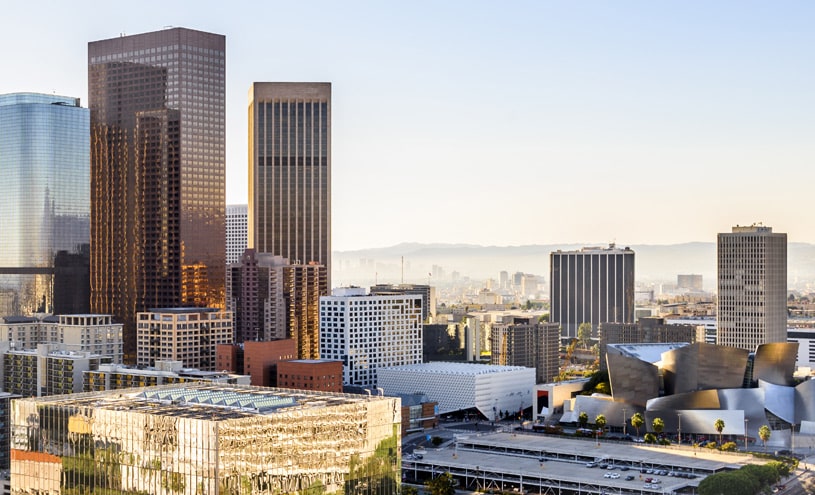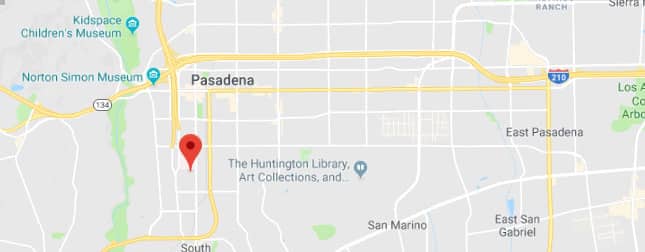 When viewing the nose from beneath, the nasal tip and nostrils form a triangle called the pyriform aperture. A nose surgeon will adjust the pyriform aperture to reduce the width of the nasal tip.
When viewing the nose from beneath, the nasal tip and nostrils form a triangle called the pyriform aperture. A nose surgeon will adjust the pyriform aperture to reduce the width of the nasal tip.
They can reduce the width of the nose by making the angles of this triangle steeper at the point where the nostrils attach to the face.
Board certified facial plastic and reconstructive surgeon Dr. Eric Yavrouian provides rhinoplasty to patients in Glendale, Pasadena, Burbank, Greater Los Angeles, Beverly Hills, CA, and surrounding locations.
Nasal Base Reduction
The nasal base reduction rhinoplasty technique can effectively reduce the width of the nasal base where it is too broad in comparison to other facial features. This technique is used in some variation as a routine part of rhinoplasty and revision rhinoplasty procedures.
Ethnic rhinoplasty patients undergo reduction of the nose base even more often. Patients with African American, Asian, and Middle Eastern lineage usually need nasal base reduction as these ethnicities typically have a wider nose base. To enhance the appearance of the nose, this area will require reduction.
Many patients considering rhinoplasty or revision rhinoplasty often complain that their nose appears too broad or large at the base. The base is measured from the outer margin of one nostril to the outer margin of the other.
Ideally, the width of the nasal base should not be more than the distance between the eyes. Upon visualizing a line extending vertically down from the corner of the eye, or inner canthus on either side, the nasal base should fall between these two lines.
But it is vital to understand that this adjustment is the aesthetic ideal for Caucasian rhinoplasty patients. This standard may not be appropriate for ethnic patients. Most ethnic nose reshaping cosmetic surgery patients attain optimal outcomes with a nasal base that is slightly wider than this ideal measurement.
Anatomy Involved In Nasal Base Reduction
To decide on the most appropriate surgical treatment of specific rhinoplasty patients, it is vital that the surgeon has an in-depth knowledge of the anatomy of the nose base area. The columella is the column-shaped structure that is found in the middle of the nasal base.
This structure bifurcates the nostrils into right and left parts. The alar base insertion is the part of the nostril side wall that attaches to the upper lip-cheek point. The nasal sill area lies between the alar base insertion point and the columella.
A Wide Sill Area
Along with a wide nasal base, some nose surgery candidates also tend to have a broad sill area that gives the nose extra width. An excessively broad sill could create a more horizontal type nostril shape. This is common in patients with a wide nasal sill.
What to Expect after Reduction Rhinoplasty Surgery?
Reduction rhinoplasty involves the same recovery period and strategies as other nose reshaping surgical procedures. Following the surgery, the patient will experience swelling and discomfort for a number of days as the nose, and the surrounding tissues heal.
The bruising will subside gradually, and the swelling will resolve as the healing progresses. The final results of the rhinoplasty will establish over a period. The patient will be able to return to their routine activities after the recovery period.
Facial plastic and reconstructive surgeon Dr. Eric Yavrouian receives patients from Glendale, Pasadena, Burbank, Greater Los Angeles, Beverly Hills, CA, and nearby areas for rhinoplasty.
For more information about treatments and procedures by Facial Plastic and Reconstructive Surgeon, Dr. Eric J. Yavrouian, serving patients in and around Glendale, Pasadena, Burbank and the Greater Los Angeles, CA area call 818-241-2150 or click here to contact him for a consultation.


 It is apparent that the nasolabial angle consists of two lines when viewing the facial profile. The first line extends from the nasal tip to the area above the upper lip.
It is apparent that the nasolabial angle consists of two lines when viewing the facial profile. The first line extends from the nasal tip to the area above the upper lip.  Nose projection is the distance that it projects outward from the point where it connects the upper lip to its tip.
Nose projection is the distance that it projects outward from the point where it connects the upper lip to its tip.  In case the nasal tip lacks definition or is too defined, it may not have a proper rotation. The upward or downward tilt of the nasal tip is called rotation.
In case the nasal tip lacks definition or is too defined, it may not have a proper rotation. The upward or downward tilt of the nasal tip is called rotation. 



